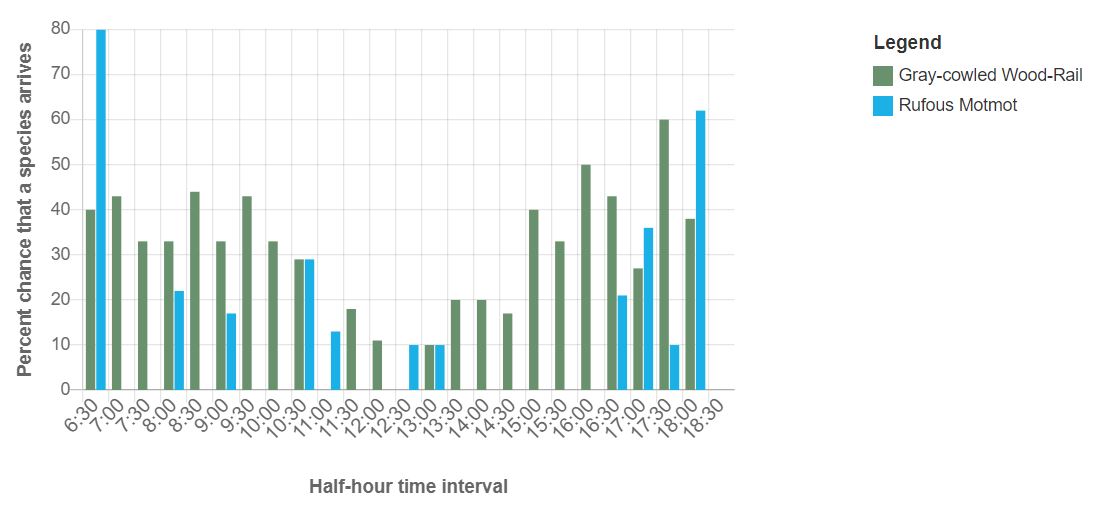Species differ in how they arrive at the feeder
August 20, 2020
When the Panama Live community discussed what to investigate, we narrowed the questions down to (1) when do six focal species arrive at the feeder, (2) does this vary from day to day, and (3) does adding food affect when birds arrive? Even though we have just three questions to answer, we have ten visualizations to explore!
In this data exploration phase, we are just beginning to uncover what the collected data can reveal. Right now, we’ve grouped data by species because we expect that species’ patterns vary due to many reasons, such as potential differences in diet and behavior. There might be more visualizations we should create (or visualizations we have made but should recreate) to better understand a pattern. You can help us do that by exploring the data with us and seeing how the data answers our research questions as well as any other questions that come to mind.
This week’s featured visualization looks at how species arrival varies with time of day. We’ve highlighted two of the six species in this interactive visualization: Gray-cowled Wood-Rail and Rufous Motmot. To create this visualization, we grouped the data into half-hour time intervals along the horizontal axis and percent chance that either of these two species will arrive at the feeder during each half-hour interval on the vertical axis. We calculated the perchance chance for each time interval over all data collection days.
Explore the interactive version of this graph.
The Rufous Motmot has the highest percent chance of arriving at the feeder in the morning and evening, showing a “bimodal” pattern. The Gray-cowled Wood-Rail shows a similar pattern that is lower during midday, but compared to the motmot’s visits, the wood-rail shows more consistent visitation in the morning and evening, with the percent chance at around 30-40% for consecutive hours.
What do you see when you look at this visual? The same thing? Something different?
Share your thoughts in the forum below.
